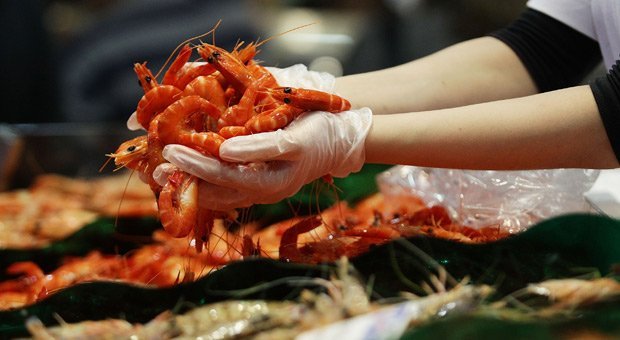Aussie seafood largely sustainable, says report

FANCY BUYING SOUTH Australian snapper for a Christmas barbecue, or casting a line for wild barramundi in Queensland, but worried about the pressure on fish stocks?
There’s comfort in new data showing most fish in Australia are caught in sustainable numbers.
The first snapshot of Australia’s wild fish populations, released this week, shows more than 90 per cent of the nation’s catch is harvested sustainably from well-managed fisheries.
Well-managed Australian fisheries
Less than two per cent comes from depleting or recovering stocks, while 3.5 per cent comes from overfished species.
Speaking at the launch of the report in Mackay, Queensland, Federal Fisheries Minister Joe Ludwig said fishing was a big part of Australian culture and a key industry for coastal towns and communities.
“Consumers can be confident that locally caught seafood comes from fisheries that effectively manage the sustainability of the wild fish stock,” he said.
It’s the first time Australia’s wild fish stocks have been studied, using a single reporting method, from the tropical north to the temperate south and the high seas.
It took 80 full-time scientists more than 18 months to analyse information on the 150 stock fish which make up the report.
Seafood consumption is on the rise
“It is quite a complicated process, you just can’t do a stock assessment on the back of an envelope in one day,” says Dr Julian Pepperell, an Australian fisheries expert and author of the book Fishes of the Open Ocean. “Each individual state is usually responsible for its own patch and this report has pieced a lot of this information together.”
The reports were prepared by the Australian Bureau of Agricultural and Resource Economics and Sciences (ABARES) in collaboration with more than 80 leading fisheries researchers.
The aim is to address a growing awareness among Australians of the need to conserve fish stocks and maintain biodiversity in marine ecosystems. Seafood consumption is on the rise, and preferences are changing and diversifying, the reports found.
Australian seafood favourites
Seafood favourites such as banana prawns, blue grenadier, flathead and eastern school whiting are being well managed to ensure the stocks remain for future generations.
However, school sharks are low in number and still being overfished across commonwealth waters, while southern bluefin tuna stocks are under threat. Depleted snapper populations in two South Australian fisheries and bigeye tuna in the Pacific Ocean are also under too much pressure.
Nevertheless, 98 of the 150 fish stocks assessed are classified as “sustainable”, with eight in recovery, three depleting and just two overfished.
Thirty-nine were classified as “undefined” due to a lack of data. The reports also display key numbers on catch trends, fishing methods and the effects of fishing on the marine environment.
Aussie fisheries really are in good shape
“It has confirmed what we have known all along. Fifteen years ago we had a problem with sustainable fishing, but mangers are now actively taking care of their stock,” comments Professor Robert Kearney, a fisheries expert at the University of Canberra.
“I guess there is this idea that commercial fishing is indiscriminate and rapacious. There have been examples of those fisheries in Australia and overseas but the point is, in our country at least, it is a thing of the past,” says Julian.
The news comes just in time for Christmas. The report’s producers have attempted to make the findings as accessible as possible in an effort to address the common misconceptions about the sustainability of commercial fishing in Australia.
“One of the reasons this report was commissioned was to start getting the messages out to the general public. Because there is a lot of negative publicity and a lot of guides to what you should or should not eat in terms of seafood,” Julian says.
“A lot of the information about fish stocks being in good shape doesn’t get out to the general public and that is where this report comes in.”
KEY RESULTS FROM THE REPORTS:
* 150 fishing stocks assessed nationwide.
* 98 stocks deemed “sustainable” – fish biomass is healthy and stock harvested sustainably.
* 8 classified as “transitional-recovering stocks” – biomass is low but fishing has been restricted to boost numbers.
* 3 classified as “transitional-depleting stocks” – biomass is healthy but fishing pressure is too high.
* 2 classified as “overfished stocks” – biomass low and fishing pressure too high.
* 39 classified as “undefined” due to conflicting or limited data.
* The 2 stocks classified as overfished are the southern bluefin tuna and the school shark.
* The total catch volume reported in data from Australian managed fisheries is 121,230 tonnes.
* Of that catch, 91 per cent came from sustainable stocks, less than 1 per cent from recovering stocks, less than 1 per cent from depleting stocks and 3.5 per cent from overfished stocks.
* Reports covered 49 key species that represent around 70 per cent of the annual catch and 80 per cent of the value of Australian fisheries.
Source: Australian Bureau of Agricultural and Resource Economics and Sciences; Department of Agriculture, Fisheries and Forestry; the status of key Australian fish stocks 2012 reports.
RELATED STORIES

